Welcome to the world of Takashi Murakami - an artist who creates unique works where Japanese culture intertwines with contemporary trends. His works are true masterpieces that captivate and inspire viewers around the world. Brightness, creativity, and depth of idea - this is what defines the creativity of this exceptional artist. His creations become a point of collision of different cultural dimensions, giving us the opportunity to see the world from a new perspective.
1. Critical thinking from childhood
Takashi Murakami was born in 1962 in the city of Saka, Japan. In his early years, his family lived in a modest area, and their house would regularly flood after each storm due to its proximity to the shore. It was because of these difficulties that, when Takashi was in the fourth grade, his family decided to move to Tokyo.
Upon moving to Tokyo, Takashi Murakami began attending art exhibitions frequently with his parents. After each visit, he had to write a review of what he saw, and if he couldn't, he would go to bed without dinner. This practice instilled critical thinking in him from an early age.
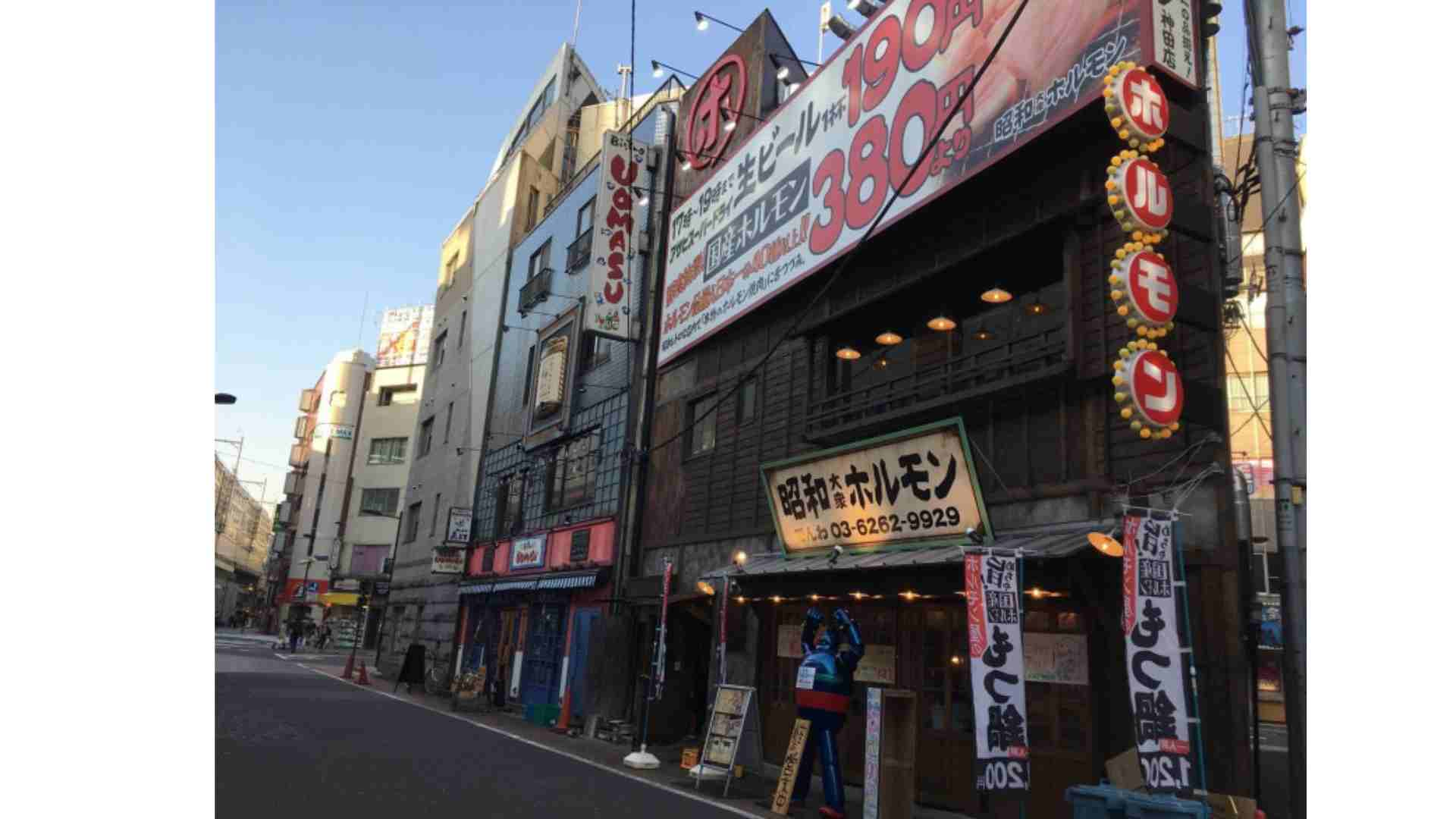
Immersion in another reality. Passion for comics and manga
Takashi Murakami's childhood coincided with the post-war period. This period left its mark on Murakami's memories, but along with that, manga, anime, and cinema culture softened the heavy memories, becoming a source of inspiration and a refuge from reality.
"My sense of beauty was formed at an early age by what surrounded me: the narrow residential areas of Japan and the imaginary escape from these surroundings, taking the form of manga and anime."
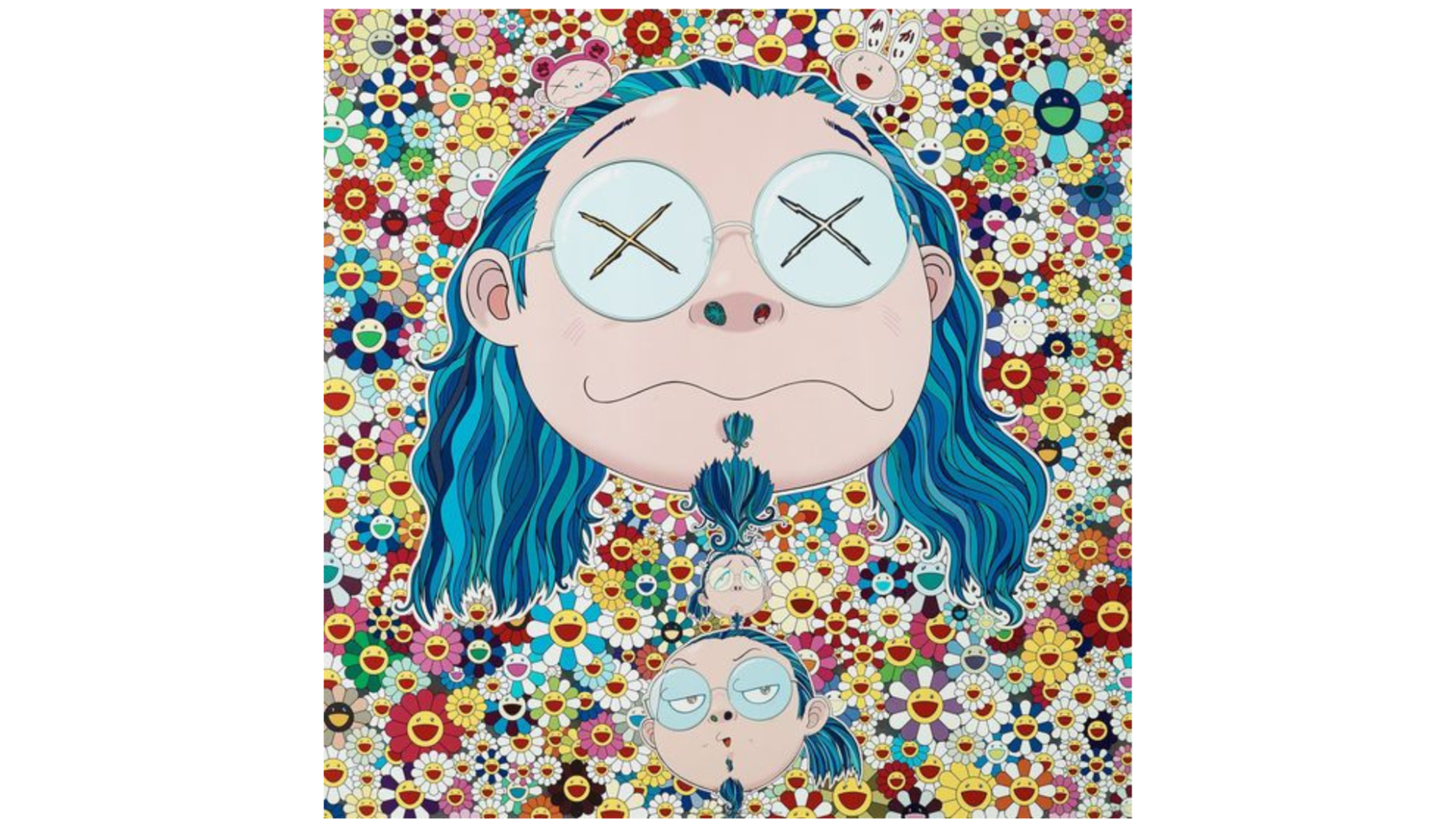
2. SUPERFLAT - invention of style and key theme of creativity
In 1994, Takashi Murakami went to New York for an educational program, where he was surrounded by Western pop culture. Immersed in the world of branding and consumerism, he realized how American culture became ubiquitous due to its accessibility and simplicity. This inspired Murakami to create an analogy for Japanese culture, becoming a key theme in his work amid globalization. He developed the concept of Superflat, combining traditional art with pop art elements.
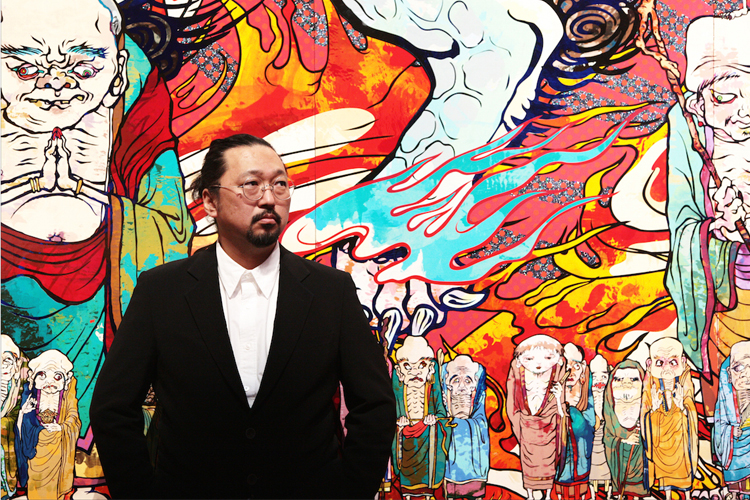
During that time, the first and one of the most recognizable characters of Murakami "was born." One night, a few days before returning to Japan, he played word games with friends, one of which was "dobojite," meaning "why?" in manga. Takashi liked it so much that he came up with a character named Mr. Dob.
3. Mr. DOB - alter ego of Murakami
This is a work, one of the most significant. A kind of portrait of his alter ego. The character depicts a creature with a round head and big ears. Dob is an abbreviation of the phrase "Dobojite dobojite," which translates to "why, why." However, Murakami chose it as an address to all world cultures, considering it a unique call to reflection.
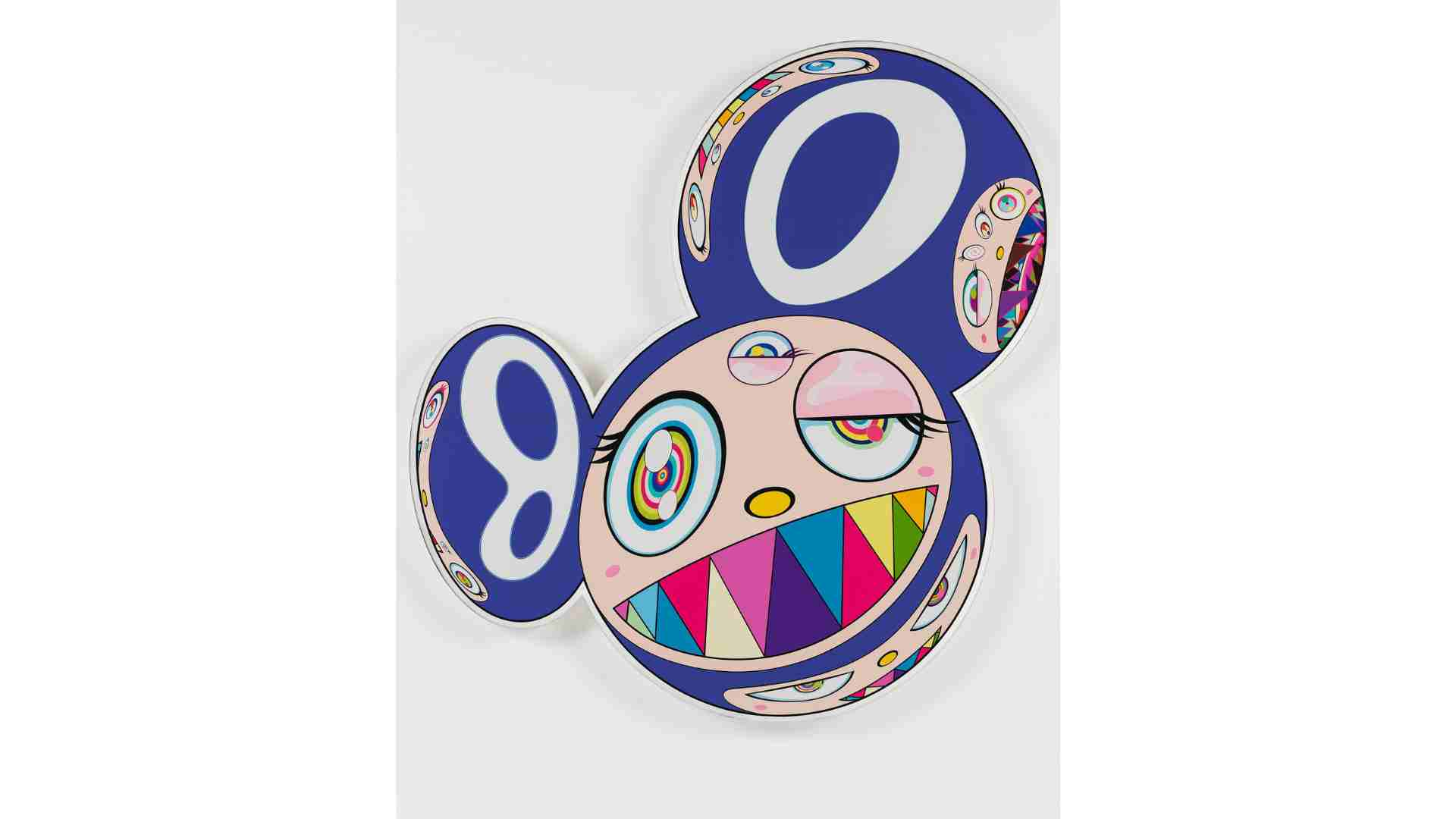
The painting was created in 1998, but later, the artist created a whole series of paintings featuring Mr. Dob, where the character was redrawn in different colors. He became a key character in his imaginary universe. Murakami envisioned making him the Japanese equivalent of Mickey Mouse – a new pop culture idol.
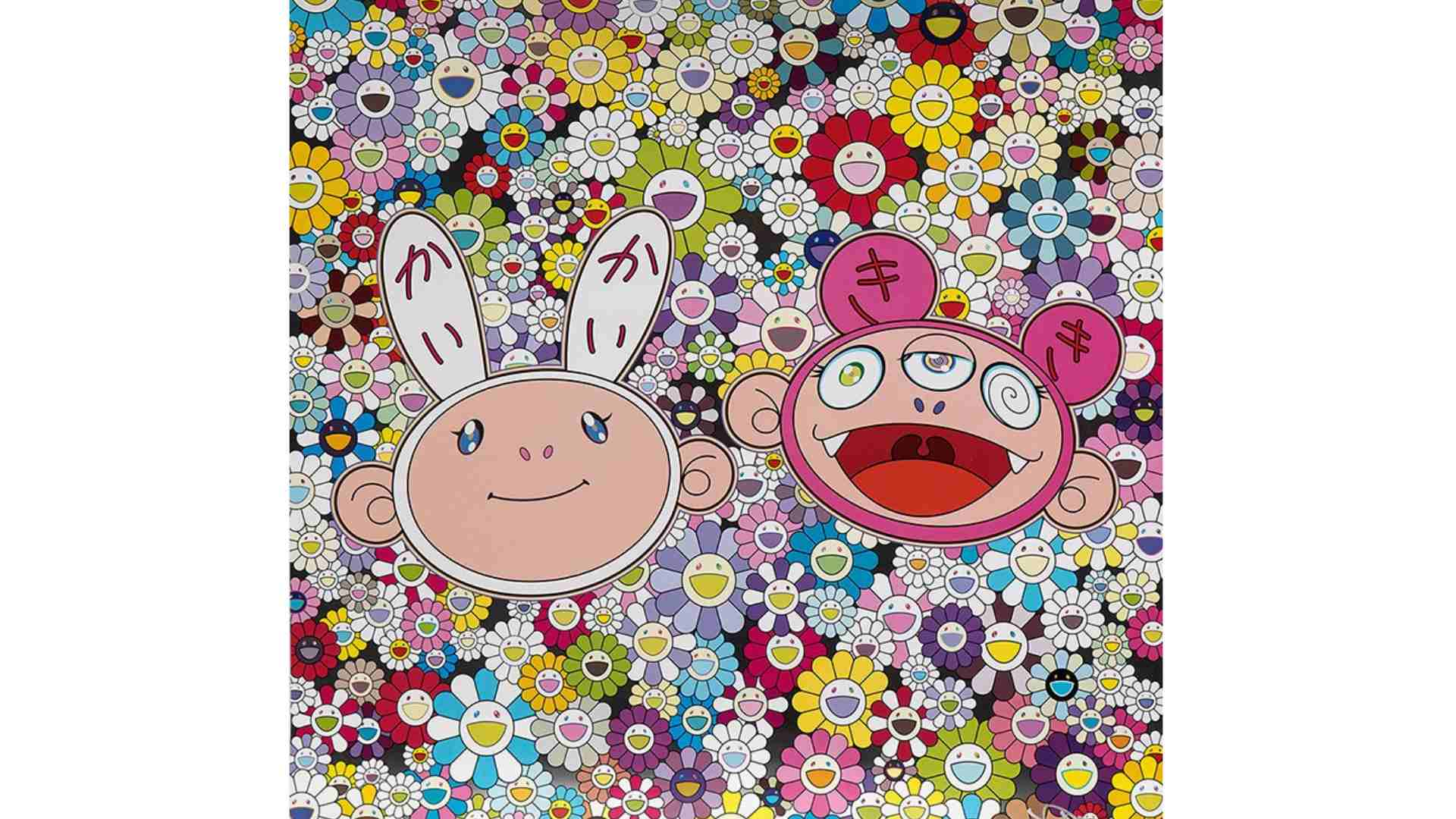
4. Criticism from the Japanese
Murakami didn't shy away from blending references to war, eroticism, and kawaii, so his works quickly gained worldwide fame.
And for this, he faced criticism in Japan: Japanese artists opposed the simplification and popularization of Japanese culture. However, Takashi himself perceived it as a compliment since simplification became one of his main objectives.
"It might not be easy, but at the same time, it's important to showcase your creations in the most understandable form. In Japan, no one talks about it, so you have to learn."
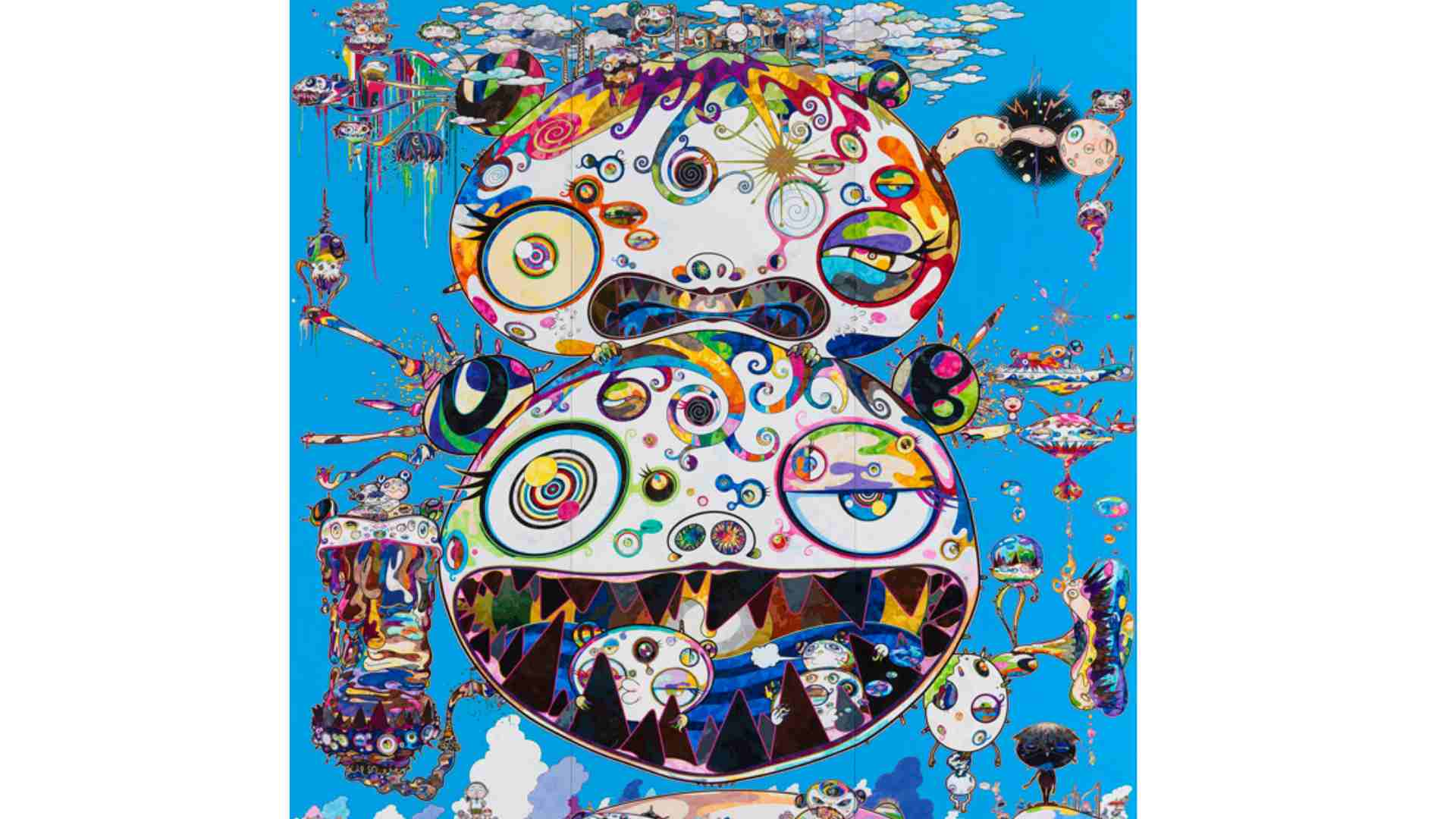
5. Harmony in Chaos: Fusion of Tradition and Anime Aesthetics
Takashi Murakami, an outstanding Japanese artist and sculptor, is renowned for his unique approach, blending traditional elements of Japanese culture and painting with a vibrant influence of manga and anime. His works represent a fantastical fusion of Japanese and contemporary aesthetics, where classical motifs interact with bold colors and dynamic characters drawn from the world of comics. Murakami creates a distinct language of art, reflecting his commitment to preserving traditions while boldly experimenting with new forms and ideas, making his creativity appealing and thrilling for audiences worldwide.
6. The first Japanese at Versailles
"For a Japanese person, this palace is one of the greatest symbols of Western history," explains Takashi Murakami. "It's a symbol of elegance, sophistication, and artistry that most of us could only dream of. But just as it's difficult for the French to imagine the details of samurai life, in our imagination lives a fantastic, unreal Versailles. It is this image that I tried to recreate in this exhibition."
Among the sculptures, paintings, and installations is the psychedelic floral sculpture 'Matango Flower.' Murakami's 'baroque,' rich, and detailed works blend seamlessly into the lush and extravagant chambers of the Sun King's palace. And the Matango Flower is a peculiar, artistically refracted symbol of the Sun.

7. Puzzle of Murakami's Creativity
The artistic world of Murakami impresses with its psychedelic frankness while urging us to consider his works in the context of deeper meanings. Here are the main ideas:
- Psychedelic frankness of Murakami's creativity: The author emphasizes that his creativity impresses with its psychedelic energy and frankness, touching upon deeper subtexts and symbolism.
- Critique of otaku and consumer society: Murakami criticizes otaku (anime and manga fans), symbolizing superficiality and fanaticism, highlighting the negative influence of consumer society on the individual.
- Uniting "high" and "low" culture: He also unites "high" and "low" cultures, questioning their legitimacy in the world of art. His works offer a new perspective on how various cultural layers interact and influence each other.
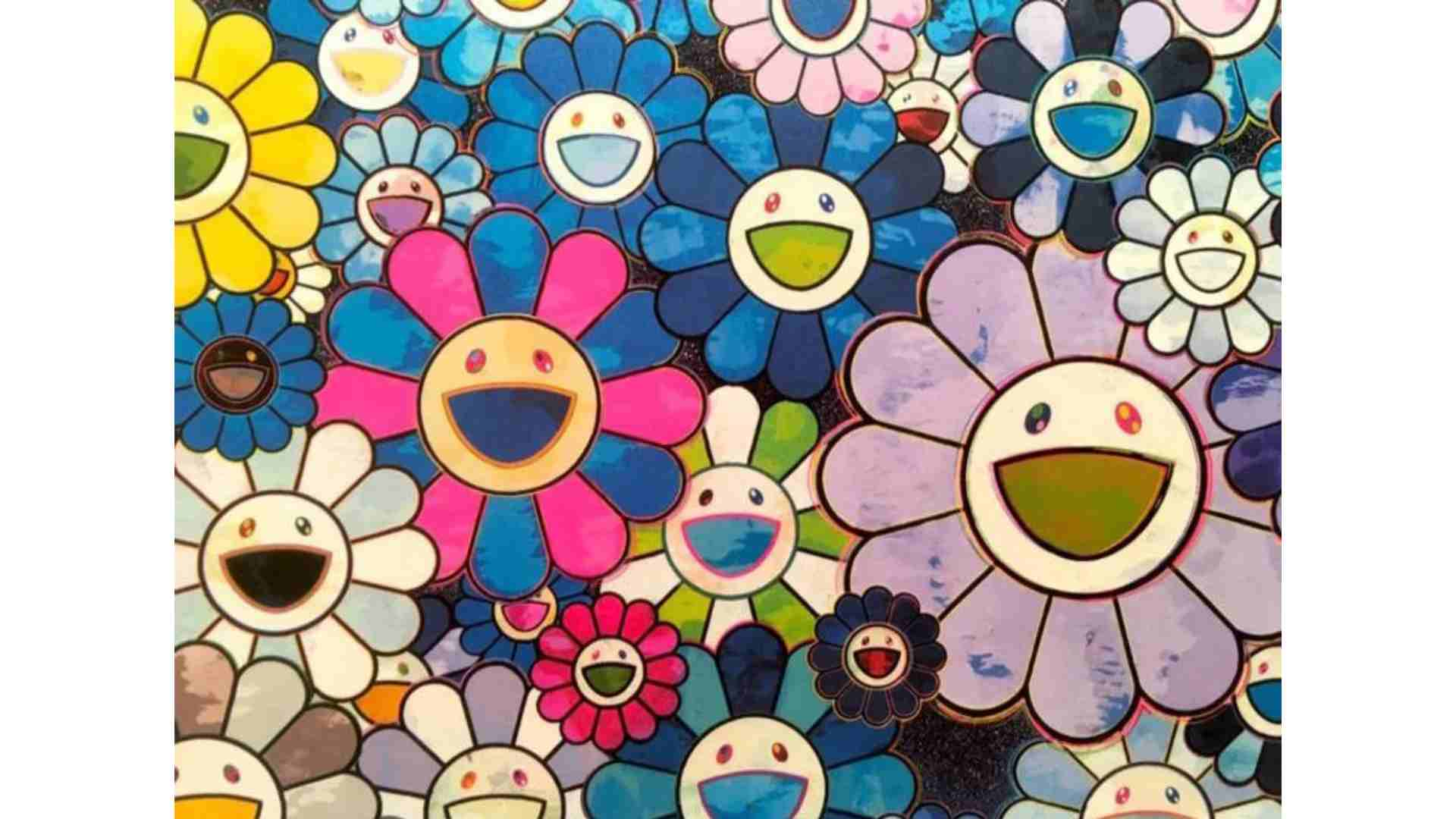
8. Comparison with Andy Warhol
Murakami is often compared to Andy Warhol. The main similarity between them lies in their ability to satirize and analyze consumer culture. Both artists use their works to reflect and critique consumerist values and mass culture. They have captured the spirit of their time, reproducing and reinterpreting symbols and images of advertising, products, and pop culture, highlighting their role in shaping contemporary society.
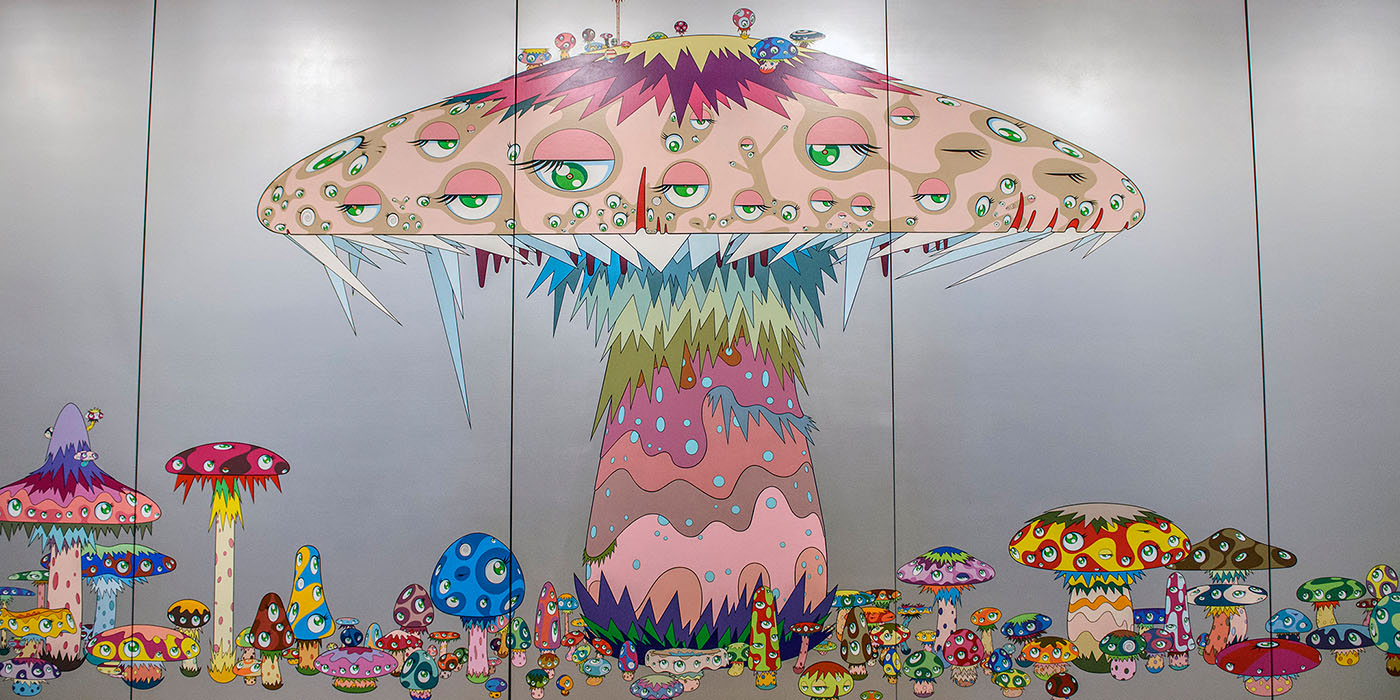
9. A Matter of Life. Murakami's Factory
Murakami created the 'Hiropon' factory, inspired by Japanese workshops, where he combined a studio with a mass production conveyor. He and his assistants work tirelessly in the workshops, maintaining discipline: every morning, the collective gathers for a workout, personally led by Murakami. As a result, the factory produces not only artworks for galleries but also various products such as t-shirts, watches, toys, and interior items, complementing the artist's creativity.

Five years after founding the factory, Murakami transformed 'Hiropon' into the corporation Kaikai Kiki Co. and opened the first office in the USA. Many critics were surprised by the artist's approach, which went beyond creating individual works and willingly turned his creations into mass-market products.
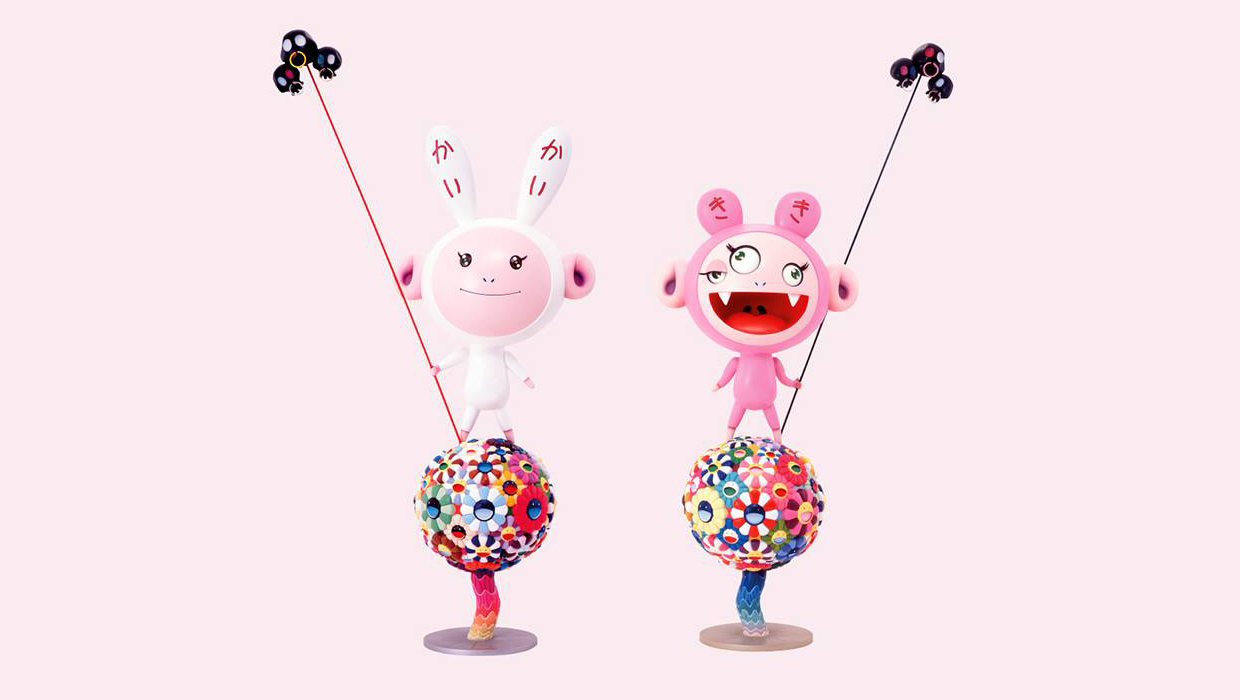
10. "My Lonely Cowboy" sold for $15 million at Christie's auction
In May 2008, Takashi Murakami became one of the most expensive contemporary artists when his sculpture "My Lonesome Cowboy" (1998) sold for over 15 million dollars at Christie’s auction. Since then, his works continue to allure collectors with playful aesthetics and subtle irony.

11. Participation in NFT
In 2021, Takashi Murakami did not stay away from the global NFT trend. Just three weeks after auction house Christies sold Beeple's NFT work, the artist has released his first NFT collection. However, immediately after launch, he decided to pause the project in order to study the mechanics of NFTs more deeply.
“I was trying to understand what the public/collectors expected from the NFT market or its structure. For context, I needed to understand the idea of cryptocurrency and Web 3.0, and it took me a long time to wrap my head around that part.”
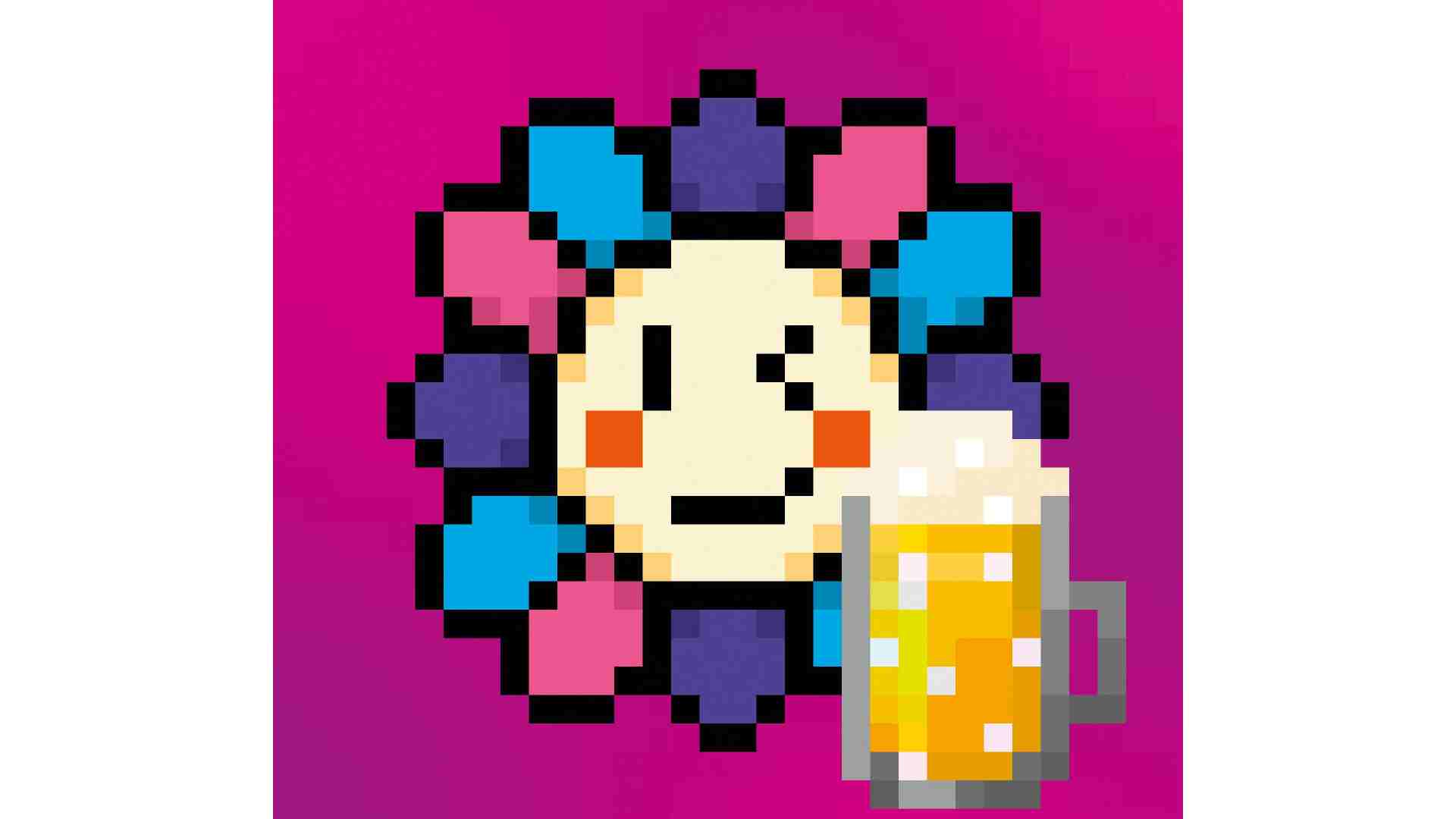
12. Partnership with Kanye West
In 2007, Kanye West transitioned from classic hip-hop to an experimental direction. Therefore, the rapper sought to give an unconventional character to everything, including the cover of his third studio album 'Graduation.' According to the artist, the work on this cover took about three years.
Later they even became friends.
Later they even became friends.
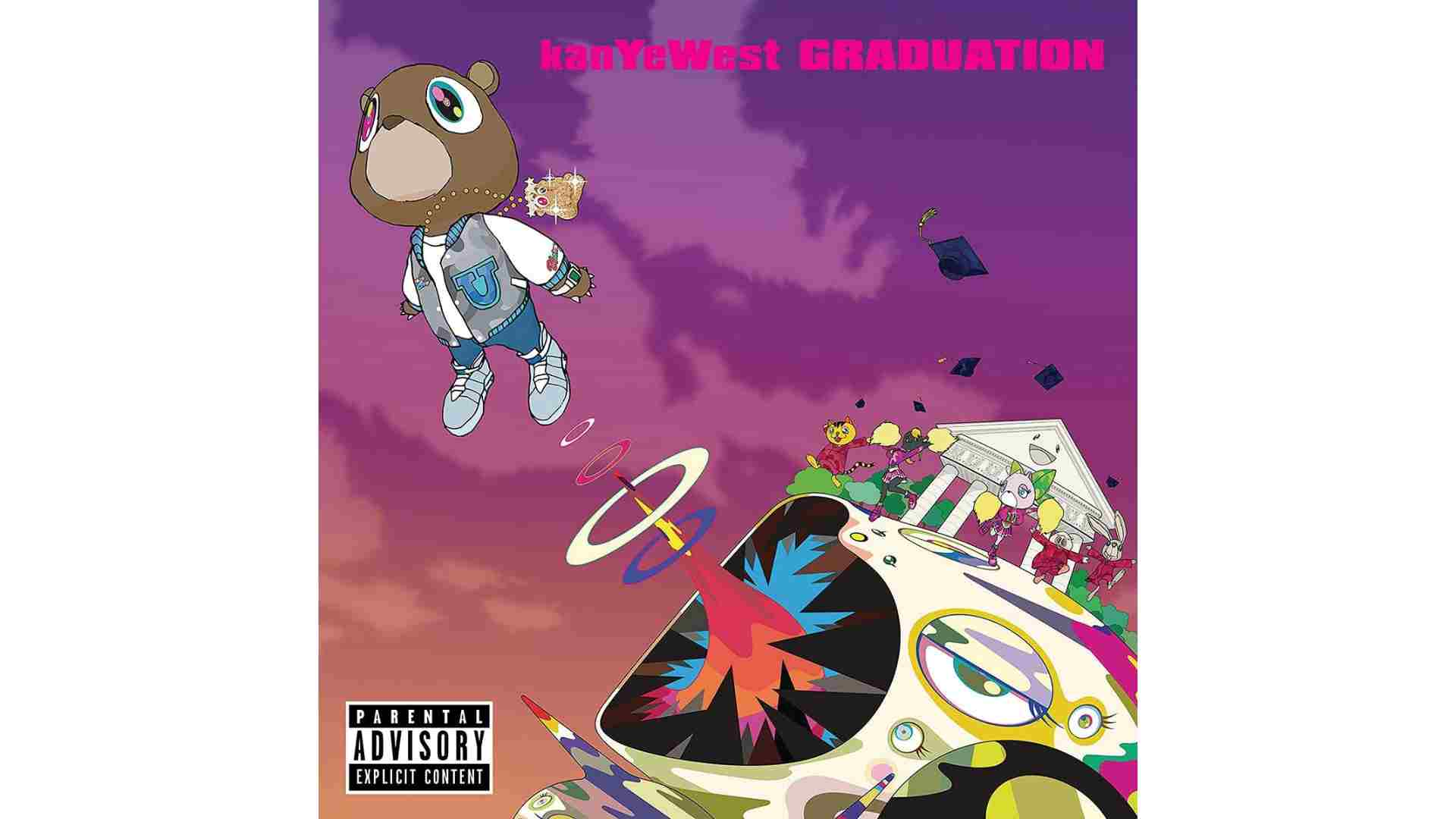
Immediately after the album's release, artists filmed a video for the song 'Good Morning,' and the bear from the covers of the rapper's three previous albums became one of the exhibits in Murakami's exhibitions.
13. Collaboration with big-name brands
Louis Vuitton
Murakami began collaborating with Louis Vuitton after an invitation from Marc Jacobs, the brand's creative director since 1997. He proposed that the artist rethink the design of bags and update the logo. Takashi created a colorful monogram and adorned the bags with bright colors, smiling skulls, and his characters.
The first collection, released in a limited edition in 2002, became extremely popular. Thanks to the bags from this collection, the brand earned over 300 million dollars. Murakami became one of the most successful commercial artists.
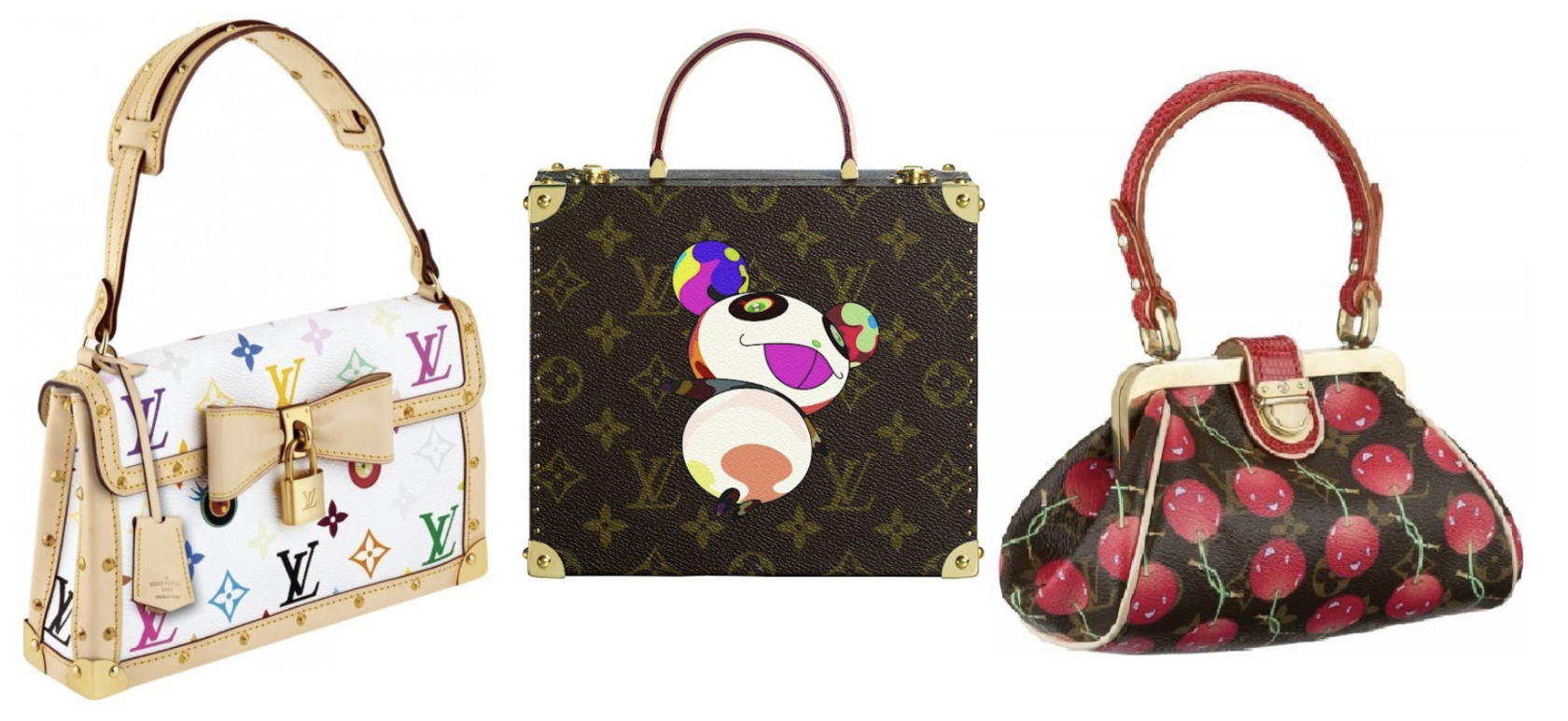
VANS
In collaboration with the Vault by Vans project, where Vans provides the opportunity for renowned artists and designers to reinterpret classic sneaker models, Murakami created six unique versions of classic slip-ons. His collection also included skateboard decks with his original drawings.
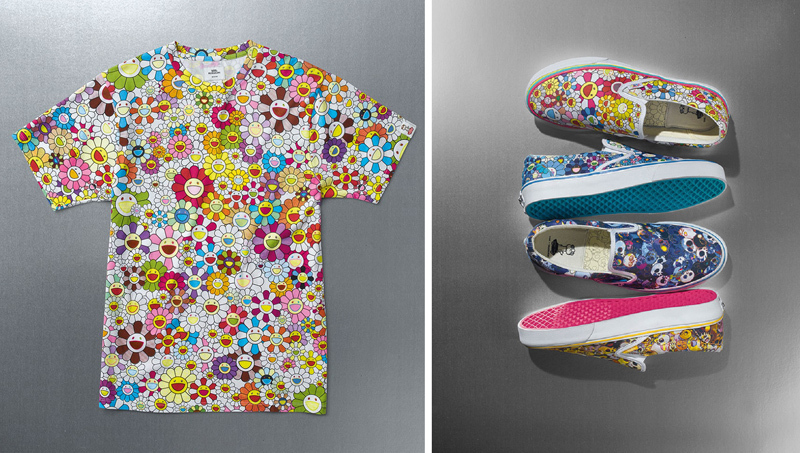
SUPREME
In 2007, the American streetwear brand offered Murakami to design skateboards. The result was three skateboards with the artist's unique drawings.












